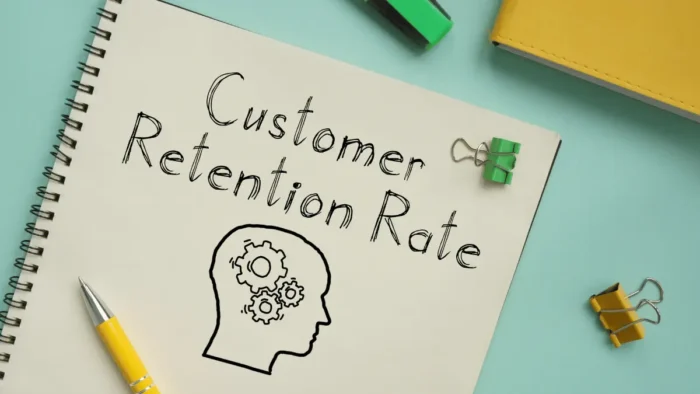Long-term customer relations means working on building relationships with your customers to create high-level loyalty for your company. That’s the best your business can get on the road to success.
You already spend a lot of money bringing new customers into your sales funnel. So, why do you not put all your efforts into maintaining them as customers and using them to grow your customer base?
Here are my 50 recommendations related to this topic. You can use them all at once or start implementing them individually.
📖 Key takeaways
- It is much more comfortable and cost-effective to sell to existing customers than to acquire a new one and then sell to them. There are many types of customer relationships, and here we will cover the five most important ones your business must manage.
- Long-term customer relationships can increase your sales, increase the number of customers, and improve your overall business potential energy. So, you need to start implementing strategic decisions to build long-term customer relations.
- We divided these recommendations into five categories: strategic approach to customer relations, team member preparation, pre-purchase, purchase, and post-purchase stage.
What Is a Customer Relationship?
Building and maintaining customer relationships is an ongoing process of engaging with your customers to improve their loyalty and retention. It involves building a strong connection between your business brand and your customers through communication, personalized experiences, and exceptional customer service.
What is the difference between customer relations and customer service?
Although people often use the terms interchangeably, customer relations and customer service have a clear distinction.
Customer service relates to the support and assistance that you provide to your customers when they have questions or issues with your product or service. So, it is a reactive approach, where your company responds to customers’ needs after they happen.
On the other hand, customer relations is related to the overall relationship between your company and your customers.
To build long-term relationships, your business needs to proactively understand and predict its customers’ needs, pain points, and behaviors through effective customer relations. You can achieve this if you provide good customer service and create total positive experiences through marketing, sales, and all possible ongoing interactions.
5 Types of Customer Relationships
There are five main types of customer relationships that you can use for your business:
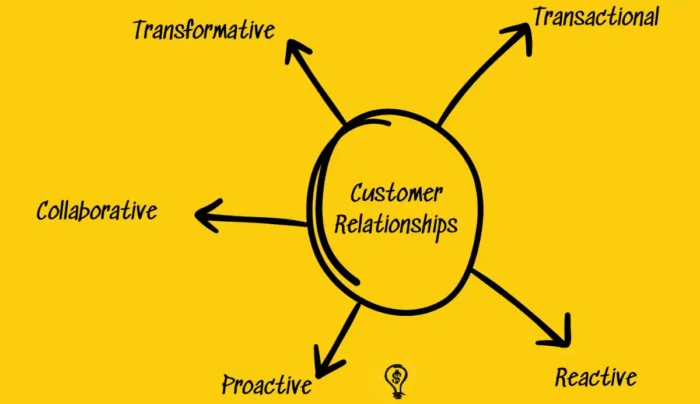
1. Transactional Relationships
This is the most basic form of customer relationship. In this case, your company sells a product or service to a customer, and there is no ongoing interaction outside the initial sale.
An example of this type of relationship is retail business where customers make one-time purchases without any further interaction after the transaction is done.
2. Reactive Relationships
When it comes to reactive relationships, your customer service team responds to customers’ needs and issues as they arise.
While this shows that your business cares about your customers, it is not proactive and will not lead to stronger customer loyalty.
3. Proactive Relationships
Proactive relationships, on the other side, require you to predict and address your customer needs before they arise.
This type of relationship provides a higher level of customer support and can lead to better customer loyalty. It helps to promote trust between your business and the customer.
4. Collaborative Relationships
When it comes to collaborative relationships, your business must work closely with your customers to co-create products or services that will meet their specific personalized needs.
Such relationships require a deeper understanding of your customer’s goals and challenges, leading to more innovative solutions that can give you a competitive advantage.
5. Transformative Relationships
This type of relationship is the most advanced level of customer relationship, where your business not only meets but also exceeds customer expectations.
In addition to providing high-quality products or services, your business will also offer a unique and transformative customer experience through personalized solutions, continuous improvement, and innovation.
Transformative relationships require a strong focus on customer feedback and insight and a commitment to improve and adapt to meet changing customer needs continuously.
The Importance of Customer Relations
One of the most convincing arguments for prioritizing customer relationships comes from the economic perspective. According to a study by Harvard Business Review, acquiring a new customer is anywhere from 5 to 25 times more expensive than retaining an existing one. This statistic highlights the efficiency of investing in strong customer relations.
Let’s look at some important benefits of positive customer relationships:
- Better customer retention. One important benefit you will get from positive customer relations is increased customer retention.
- Increased Customer Lifetime Value (CLV). Positive customer relations lead to more frequent purchases and higher spending over time, increasing CLV.
- Decrease in marketing costs. Usually, satisfied customers with positive customer relations will become your brand advocates, willing to share their positive experiences through word-of-mouth. So, you can drastically reduce the costs of traditional marketing tactics.
- Better brand reputation. Positive customer relations will translate into great customer feedback, which, on the other side, will improve your brand recognition.
- Competitive advantage and differentiation. Building positive customer relations can differentiate your brand from its competitors. For example, offering personalized service to your customers can make your brand stand out in the market.
- Valuable feedback. Building positive customer relations promotes open communication and provides critical insights into your business operations and offerings.
- Upsell and Cross-sell. Satisfied customers are more likely to purchase additional products or services from your company. This openness creates opportunities for upselling and cross-selling, which can increase revenue.
- Emotional connections: Strong customer relations encourage emotional connections with customers. Customers who feel personal and emotional connections to your brand are likelier to be loyal customers.
- Higher level of customer trust. Building positive customer relations will build trust with your audience. This trust then fosters customer loyalty, which can lead to positive word-of-mouth referrals, helping you attract new customers and retain existing ones.
50 Recommendations for Long-lasting Customer Relationship
If your business has a large customer base and they stay as customers, they will become increasingly profitable for your company. This will bring exponential growth to your small business. Consider the potential benefits one customer can bring to your company if you have a long-term relationship with him.
For example, one customer trusts you and recommends your brand, products, and services. Let’s say that he can bring three additional customers to your small business. If you continue to build a long-term relationship with them, and the results of such a process are the same as those of your first customer, you will get nine new customers. So, that one customer brings in a total of 12 new customers.
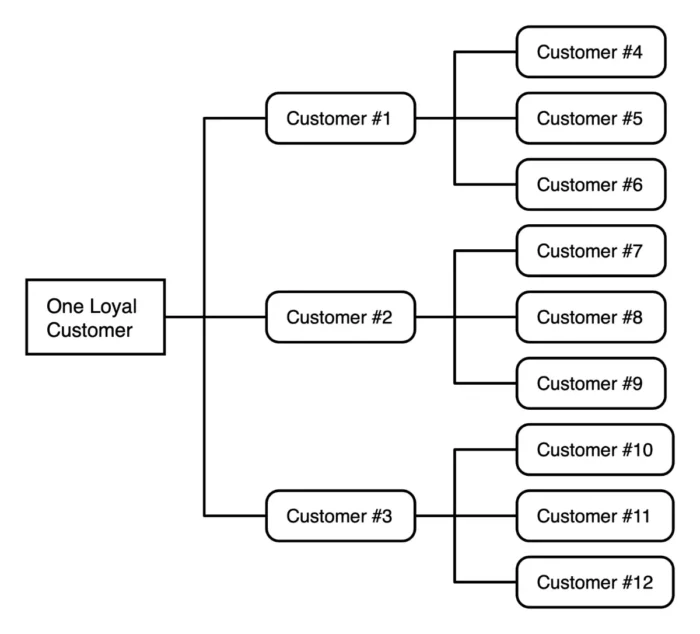
If you continue with the same math, you will understand why I say that you will achieve exponential growth.
So, here are my 50 recommendations for long-term customer relationships.
Strategic Approach to Customer Relations
Before making any decisions related to customer relations, you must start with the research to learn as much as possible about your customers and then develop the strategy and plan to help you build long-term customer relations.
1. As a first, put yourself in their position.
Think as your customers think. As an entrepreneur, you must know how customers think about many topics. This can become the foundation for your customer relationship programs.
So, start with the market research to define your target audience and develop customer personas and journey maps.
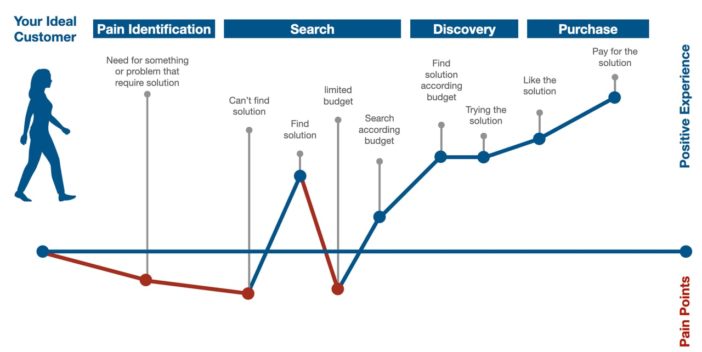
2. Design a long-term plan and strategy for building customer loyalty and each customer interaction.
If you build your customers’ loyalty to your small business, you can have a great customer relationship.
Building loyalty and how your brand will interact with customers is a strategic decision and requires a strategic approach.
For example, if you plan to organize an award for your customers (a great way to increase loyalty), use the right award software to implement this plan.
But, remember, you must implement your plan and the strategy. Why do you want strategies and plans if you don’t implement them? So, when you create a strategy and plan related to customer loyalty, you need to start with the implementation.
3. Work on continuous improvement of those plans and strategies.
You need to understand that nothing can be perfect.
There will always be the possibility of improvement in customer interactions. This is especially true for your customers, who may change their wants and thoughts.
4. Be patient when it comes to building long-term customer relations.
Building long-term customer relations will sometimes require more time than you think, but it will be worth it for you and your small business.
5. Ensure that your business is a real problem solver.
You must understand that your business exists to solve your customer’s problems. So, do your job.
If you solve only the symptoms, you will not solve your customer’s problems. So, you need to solve problems, not the symptoms.
6. Develop a strong customer satisfaction policy.
If you want customer satisfaction to be a top priority for your business, you must create and implement a customer satisfaction policy.
This policy should outline how your business will effectively handle customer complaints, feedback, and issues to ensure the best possible customer experience.
Prepare your team members.

It is really important to prepare all your team members regarding customer relations. You must ensure that all your employees know how to interact with your customers regardless of their position or department inside your company.
7. Develop processes and standard operating procedures based on your customer relations strategy.
Having a well-defined process and standard operating procedures (SOPs) provides consistency in how your team members handle customer relations.
If you offer a great and consistent customer experience, your business will survive and grow in a competitive market.
8. Invest in people who are the best.
Your business needs the best people. Your customers want to be with the best.
So, invest in the best people to join your small business.
9. Train your team members on the importance of customer relations.
Ensure that all your team members, regardless of their workplace, understand the value of building and maintaining positive customer relations. This will help them prioritize and manage each interaction effectively.
10. Educate your staff about your company’s approaches regarding customer relations.
Your business is not only you, but it includes your staff members. They need to prepare themselves for each possible interaction as a part of your customer relationships strategy.
11. Encourage open communication within your team to share insights from each interaction.
You must develop an open and collaborative environment and encourage your team members to share their observations, feedback, and ideas from customer interactions. Based on this feedback, you will ensure continuous improvement in your approaches to customer relations.
12. Set goals for your team to improve customer satisfaction and increase customer retention rates.
Your team’s performance goals must include specific customer satisfaction and retention targets.
I know that sometimes targets can be demotivating factors, but I think this will help you keep everyone focused on providing the best possible customer experience.
13. Recognize and reward exceptional customer service within your team.
Recognizing and celebrating the positive customer experience your team members achieve is important. This will not only increase their morale but also encourage staff members to seek excellence in their interactions with customers.
14. Add value to each customer interaction.
You are the value creator. In the average customer lifecycle, you will have many interactions.
So, try to add different values to them whenever you interact with them.
Pre-purchase customer relations:
The pre-purchase stage is an important part of the customer lifecycle and has great potential for building trust and establishing a positive image for your company.
During this stage, providing value to customers through helpful information, answering their questions, and providing a great experience is crucial.

15. Don’t expect to sell them something from the first time you meet them.
I have seen many entrepreneurs make mistakes on their first meeting with potential customers. They try to sell them something without previously trying to build a long-term relationship with them.
Don’t make such a mistake.
16. Don’t construct a static offer. Give them options to choose from.
Your offer is something that your customers will evaluate. If they can’t choose from different options, or your offer is not adjustable and personalized according to their specific needs, they will stop all relationships with your company.
Here is how you can implement the customer relationship management system to manage customer interactions in your small business.
17. Be honest as much as possible with them.
Remember that honesty is one of the most important things you must do for your customers.
Be honest with them, and they will return to you with excellent relations with your company.
18. Don’t tell them. Educate them about the differences between your business and competitors.
Instead of telling things, educate your customers about different things related to your business and your competitors.
For example, you can develop guides that will help your potential customers go through your product features and benefits, such as step-by-step tutorials, webinars, videos, and live demos.
19. Use social media to communicate with potential customers.
You probably already know about the power of social media in reaching and building relationships with customers.
Find them where they are and become part of their social media presence.
20. Track your pre-sales customer interactions using a specific database or Customer Relationship Management (CRM) software.
Today, you can use different tools to collect information about your customers and company. You must organize and use this data from simple spreadsheets to advanced customer relationship management systems.
21. Use customer testimonials and case studies.
If you want to show your excellence in customer relations and attract new customers, show your existing customers’ success stories and positive experiences to build credibility and trust.
Purchase stage customer relations
Inside the purchase stage, your relationship with the customer should be more personalized.
This stage is crucial for closing sales and applying the basis of strong, long-lasting customer relationships. Here are strategic tips to enhance customer relations during this critical phase:
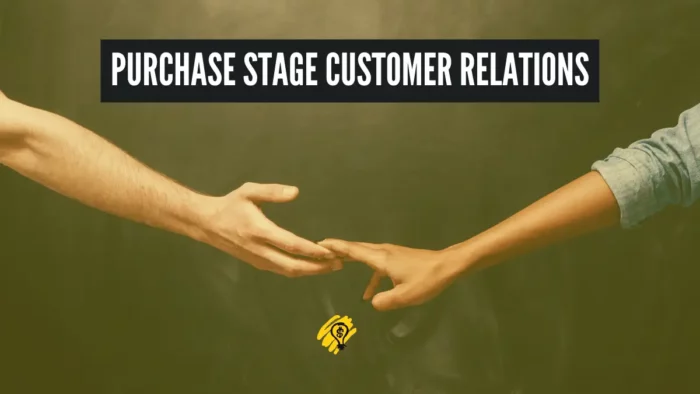
22. Be human, not a business in interactions with customers.
You need to be human, not the company. Why do you want to hide behind your company? It is easier to build strong customer relationships as a human than a company.
So, don’t use language that is not understandable for your customers; you want to communicate clearly with them.
It is essential to show yourself as a real human person. So, don’t use roles to hide behind them. Be yourself.
23. Provide personalized customer experience.
Personalize the purchasing experience to meet each customer’s unique needs. Use customer data to predict their needs and provide personalized recommendations.
In conversation with your customers, always start your answers with YES and then make explanations. Never begin with NO as an answer.
24. Respect them.
You must respect your customers if you want to be a respected entrepreneur and company.
Treat them as you would want to be treated – with kindness, understanding, and professionalism.
25. Show genuine interest in them.
Show genuine interest in your customers beyond just making a sale.
You must engage with them, ask for their opinions, and allow them to talk more than your sales team. Building a personal connection with your customers can go a long way in creating lasting relationships.
26. Offer extended product information.
Ensure that each customer has access to detailed, clear, and concise product information. This includes specifications, benefits, “how-to” instructions, and any relevant safety information.
27. Ensure transparency.
Being transparent is crucial for building trust and loyalty among customers. Ensure that your company is transparent about all aspects of the purchasing process, especially pricing, shipping costs, delivery times, and return policies.
Remember that clear communication will help you build trust and reduce possible post-purchase dissatisfaction.
28. Listen to your customers.
You must listen to your customers, but you must also use active listening. Listening is crucial in building a long-term relationship with your customers.
Active listening is different from passive listening because it requires your company to actively engage with your customers, ask questions, and seek clarification to understand them. Simply, active listening will show your customers that you value their opinions and are willing to make improvements based on their feedback.
29. Educate your customers.
Beyond selling a product, provide customers with additional value through educational content related to your offerings, such as how-to guides, tips for maximizing product benefits, or industry insights.
30. Offer self-service options.
Today, customers expect convenience and efficiency.
Self-service means providing customers with the tools and resources to find answers independently without reaching out for assistance.
Offering self-service options can save time for your company and customers. It can also reduce the workload for your customer service team and improve overall customer experience and satisfaction.
31. Offer different payment options.
You can not achieve extraordinary customer experience if they can not pay you with their most appropriate payment means.
I know how frustrated I am when my credit card is rejected and there is no other payment option that I can use when purchasing something.
32. Be flexible and allow order customization options
Everyone can make a mistake, even your customers, when they place an order from you.
So, allow your customers to make last-minute changes to their orders if it is still possible. In such a way, you will bring the customer experience to a much higher level.
33. Offer exclusive deals or discounts.
Create special offers or discounts specifically for your most critical customers as a way to show appreciation for their loyalty. This will also encourage them to continue doing business with you.
34. Simplify the purchase process.
Ask yourself how many steps your sales process has.
You can also check and go through the whole process. Dive into the steps and consider whether they need to be part of it.
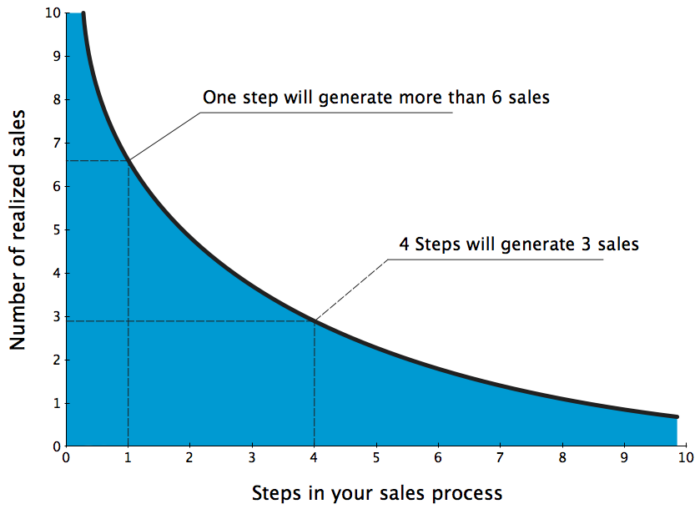
Post-purchase customer relations
Post-purchase interactions are just as important as pre-purchase interactions. You must continue to maintain customer relationships, engage and offer value to your customers after they have made a purchase, and in such a way, you can improve customer relationships.
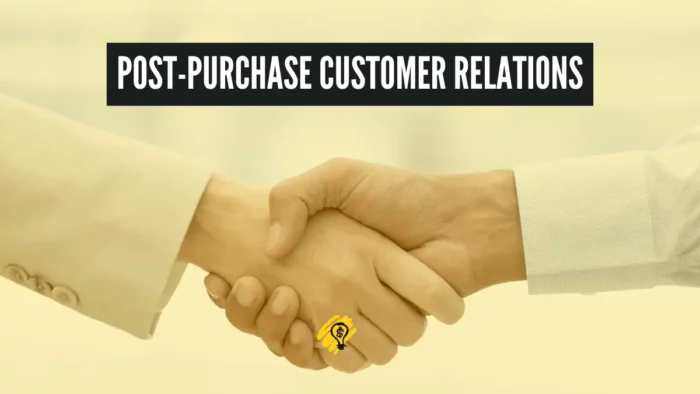
35. Don’t neglect post-purchase customer relations.
Many companies focus on acquiring new customers but ignore the importance of maintaining relationships with existing ones.
Make sure to follow up with your customers after a purchase, get feedback, and address any concerns or issues they may have.
36. Always think about customer success.
Customer success is important for you. If they succeed because of your company’s relations with them, it means that you will also succeed in maintaining strong customer relationships.
37. Always deliver on your promises.
When you promise something before or during the purchase stage, ensure that you consistently deliver.
This is really important if you want to have loyal customers.
38. Decrease wait time.
One of the biggest frustrations for customers is long wait times. Whether it’s waiting on hold to speak with a customer service department, waiting for a response to an email, or waiting for product delivery, no one likes to be kept waiting.
Consider implementing systems and processes that decrease wait times to improve the customer experience and create positive customer relationships.
39. Measure and improve customer satisfaction.
One key component to building customer relationships is ensuring that they are satisfied with their experience with your company. So, you must regularly measure customer satisfaction levels through surveys, feedback forms, and social media engagement.
You can use this information to identify areas for improvement and make necessary changes to improve your customers’ experience.
40. Handle all negative reviews/comments promptly.
Today, online reviews are very significant in the eyes of potential customers. So, addressing any negative reviews as quickly and professionally as possible is important.
So, ensure you understand the issue, apologize if necessary, and offer a solution or compensation if appropriate. In this way, you will transform negative reviews into positive relationships.
41. Show appreciation for your customers.
Customer appreciation is an important part of your customer relations strategy. It shows that you value your customers.
You don’t need to reinvent the wheel when it comes to customer appreciation. Simple gestures like sending thank-you notes, offering exclusive discounts, or rewarding repeat customers can help you build positive customer relations.
42. Create an online community for customers.
Building an online community for your customers is a great way to build positive customer relationships.
For example, you can create an online forum or social media group where your customers can connect with each other and your brand.
43. Collect customer feedback.
Ensure that you always collect customer feedback through surveys, social media polls, website contact forms, or even just ask for their opinions during interactions.
Customer feedback will provide you with valuable insights for achieving positive customer relations and improving your products or services.
Customers have their secrets, and if you don’t ask them, they will not tell you. They can become the most significant innovation source for your company.
Related: Here is How You Can Show Benefits Instead of Features
If you want a strong customer relationship, you need to become more than a business with them. So, why not make your company their best friend?
44. Inform them promptly about the most important things in your company.
You need to inform and contact your customers continuously. If you don’t, they will quickly forget you and your company.
Related: 7 Amazing Communication Tools You Can Use With Clients
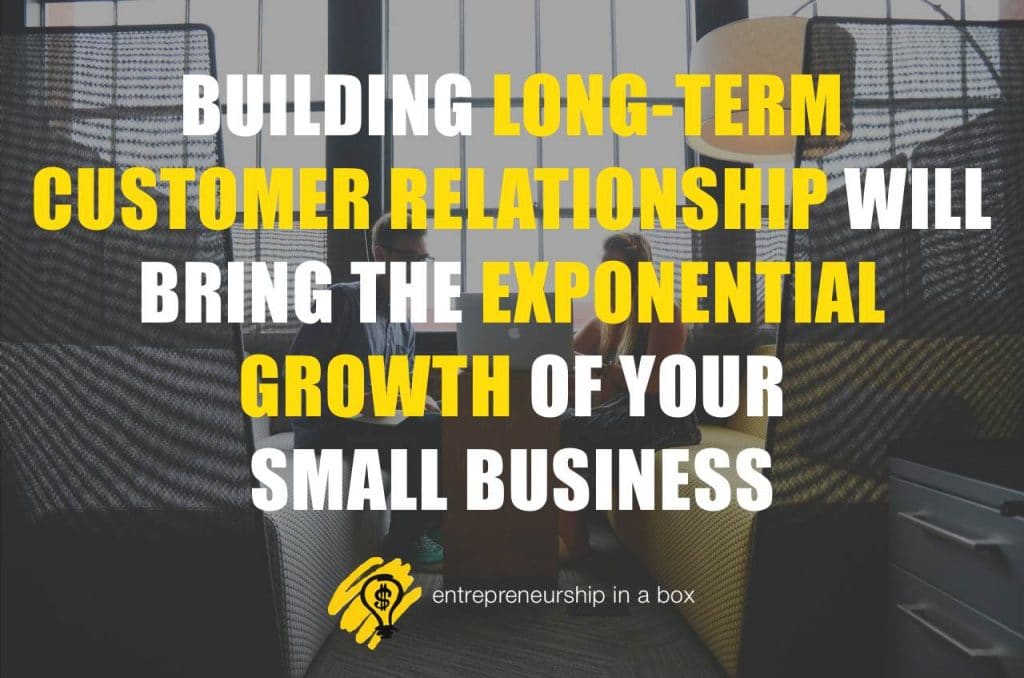
45. Ensure extraordinary customer experience for the most critical customers.
Don’t lose your money, time, and energy on non-profitable customers. Focus on the most important customers for your small business.
You can use the Pareto principle (80/20 Rule) to identify and group your customers according to their importance for your small business.
46. Provide exceptional customer service.
Exceeding customer expectations with exceptional customer service experience every time they interact with your business will keep them returning for more.
Microsoft’s 2017 customer service report finds that 54% of respondents say they have higher customer service expectations today than they did one year ago. So, great customer service experience
47. Recognize the efforts of your customer service staff.
Your customer service staff is the face of your business and plays a crucial role in ensuring increased customer satisfaction.
So, when your customer service performs great, ensure to recognize their hard work and efforts.
48. Include your customers in product development.
Including your customers in your product development process will help you develop products that exceed customer expectations.
49. Use personalized re-engagement campaigns.
Use past purchase customer data to design personalized marketing messages that will re-engage customers to repeat business with you.
50 Use referral programs.
Encourage satisfied customers to refer friends and family with incentives for both the referrer and the new customer.


